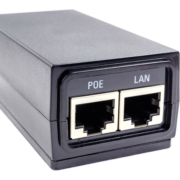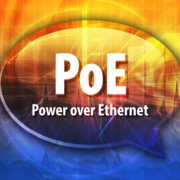Power Over Ethernet (PoE) Explained
Power over Ethernet Explained – (PoE) is a technology that allows electrical power to be transmitted over standard Ethernet cabling. This can simplify installation and reduce cabling costs by eliminating the need for separate power cables. PoE is useful in applications where AC power is not readily available or where battery-powered devices need to be run for extended periods of time.
What are the PoE Power ratings?
The PoE power rating is the maximum amount of power that can be safely transmitted over an Ethernet cable. The most common ratings are 15.4 watts (W) and 30 W, although higher-powered devices are available for applications that require more power. The specific power requirements of a device will vary depending on the make and model, so it is important to consult the manufacturer’s documentation to determine the maximum power rating that can be safely used.
PoE+
POE+ is an enhanced version of PoE that can deliver up to 30 watts of power. As a result, POE+ is useful for powering devices that require more power, such as video cameras and multimedia phones. In addition, it’s also backward compatible with standard PoE devices, which means that it can be used with existing PoE infrastructure.
PoE++ type 3
PoE++ type 3 is another enhanced version of PoE. Type 3 can deliver up to 60 watts of power. PoE++ type 3 is useful for powering devices that require more power, such as video cameras and multimedia phones. Much alike other enhanced PoE’s, type 3 is also backward compatible with standard PoE devices.
POE ++ type 4
PoE++ type 4 is the latest and most powerful version of PoE. Type 4 can deliver up to 100 watts of power. PoE++ type 4 is useful for powering devices that require more power, such as video cameras and multimedia phones. Just as the other PoE’s, type 4 is also backward compatible with standard PoE devices.
How Does PoE Work?
PoE relies on the same twisted pair cabling that is used for Ethernet data transmission. A special power injector or switch can be used to deliver power to devices over the Ethernet cable. Power injectors connect to a standard AC outlet and have a port for connecting an Ethernet cable. The power injector then sends power over the Ethernet cable to the device.
The device receiving power, such as a VoIP phone or wireless access point, has a built-in PoE module that extracts the DC power from the Ethernet cable and uses it to power the device. Furthermore, the PoE module also contains circuitry that allows the device to communicate with the power injector or switch. This communication is used to negotiate the amount of power that the device needs.
What Are The Benefits Of PoE?
- PoE can simplify installation by eliminating the need for separate power cables.
- PoE can also reduce cabling costs by using the existing Ethernet infrastructure.
- In addition, PoE can provide a reliable power source for devices that may be located in difficult-to-reach places.
- Lastly, PoE can also be used to power battery-powered devices, such as wireless access points and VoIP phones, which can greatly extend their operational life.
What Are The Drawbacks Of PoE?
PoE can introduce some complexity to the network infrastructure. In addition, PoE devices can be more expensive than their non-PoE counterparts. Finally, PoE can introduce electrical noise into the network which can degrade network performance.
Devices that use POE
- IP Cameras, Motion tracking cameras
- Switches
- VOIP Telephones, IP Telephones
- Wireless Access Points
- Powered Audio
- Alarm Systems, Door Access Systems,
- Biometric Sensors
- Remote computer terminals
- Monitors
- Point of sale systems, Some laptops





